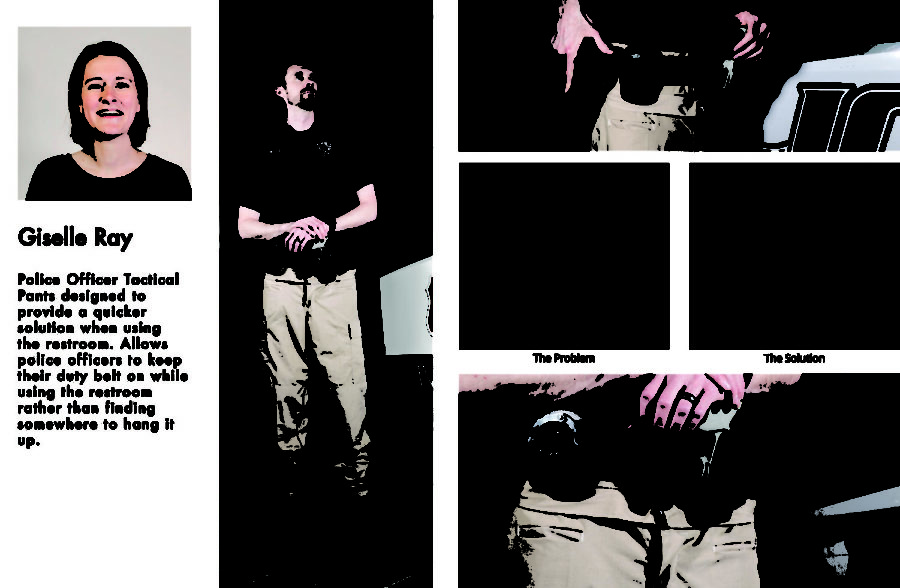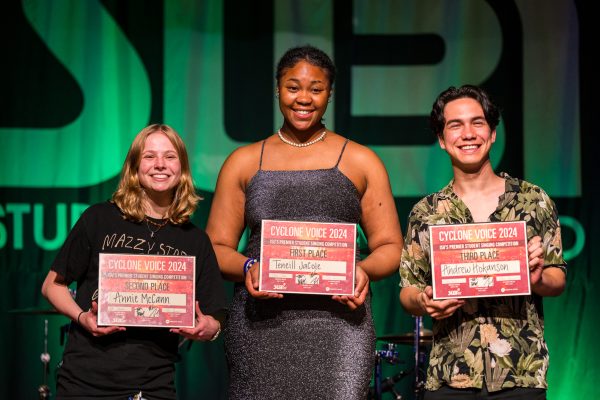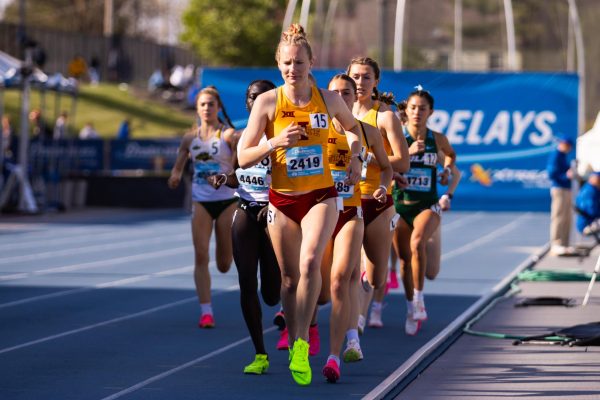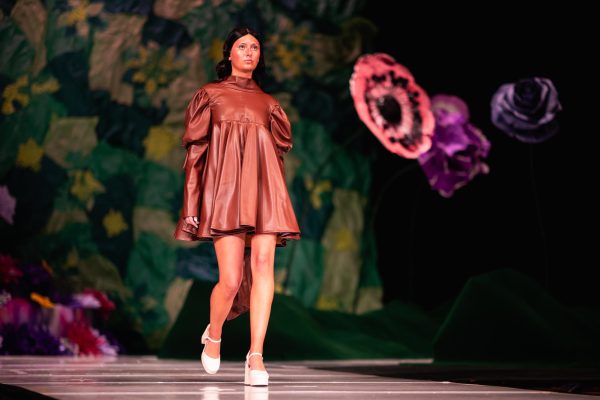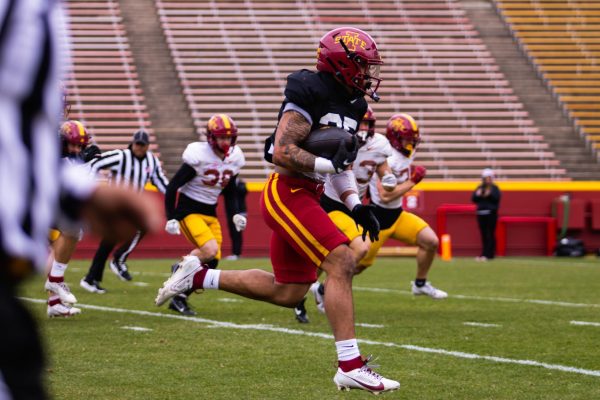- Multimedia
- Multimedia / Photos
- News
- News / Politics And Administration
- News / Politics And Administration / Campus
Design course partners with Iowa State police department to design new gear
February 12, 2020
Vests, search gloves, duty pants and vehicles are a few standard items that every police officer across the nation uses. One design course at Iowa State is looking to upgrade and improve these uniforms through a partnership with the campus police.
Daniel Neubauer, assistant teaching professor of industrial design, said curiosity and convenience of location created this project.
Because the design studio space is located next to the Iowa State University Police Department in the Armory building, Neubauer said he would talk to the officers in the hallways and ask about their gear and uniform issues.
Neubauer said the studio has two main goals: helping officers with their uniforms and creating more community outreach for the police officers.
“[We] started out initially looking at the ergonomics of the gear that police officers wear or the interior of the squad cars and that we could improve their day to day life as far as the physical toll,” Neubauer said.
A normal police duty belt typically weighs between 17 and 25 pounds. This weight causes numerous issues to the back, knee and hip, potentially causing pain for the officers who wear them for entire shifts.
Anthony Greiter, police officer and community outreach specialist for ISU PD, said to the Iowa State news service that he leaves every football game with bruises on his hips from the duty belt. It’s also cumbersome when it comes to using the restroom, particularly for female officers.
“How can we keep that nice, clean-looking uniform that a lot of the officers prefer without having to put holes in shirts or add any extra gear or equipment that would hinder their day-to-day work?” Neubauer said.
There are students looking at different suspension systems for the belt weight, different car storage solutions and weight distribution vests.
Brian Holden, student in industrial design, took the course because he has an interest in designing products for police officers. Holden and Logan Coppess, student in industrial design, are working on the organization of trunk space.
“I’m making some kind of storage device that’s a wall that wouldn’t limit the back of their vehicles, but they would be able to pull out this wall,” Holden said.
Coppess is looking at rearranging current drawer systems used and focusing efficiency while following regulations.
“It’s very important for us to know what they can have, what they can’t,” Coppess said.
The ISU PD is upgrading their vehicles that have a different trunk style, so Coppess and Holden have to adjust their project to fit the upgrades.
Holden said it would be interesting to work with the state patrol or the Department of Natural Resources because they have a different variety of vehicles and organization systems.
Neubauer said many students have said they have done user-centric projects like this before but have struggled to speak to the users about their frustrations.
“[The police officers] are dealing with these frustrations day in and day out; they’re at the top of their mind, and so they always have wonderful insight,” Neubauer said.
If the students have questions or want to see how something functions, they are able to go outside and look at the vehicles or have the equipment in the room to look at. Many times the officers stop by to see how the projects are progressing or if a student has questions.
Once, the class brought a few squad cars into the Armory to examine.
“Our design students notoriously like to work overnight occasionally, so the overnight police that are on patrol will walk through and check in on the students,” Neubauer said. “What other user group do you have 24/7 access to?”
The second outcome that came out of this was a way for the officers to have a long-term community outreach opportunity.
Most community outreach they do is for a short period of time, once, at a greek house or at a community event.
“Here, we oftentimes have police officers in the class every week, a couple of times a week, sitting down, talking to students because they’re just as invested in these projects as the students are,” Neubauer said. “Not only do you get some really interesting project outcomes, you start to develop relationships and trust.”
Neubauer said it breaks down the initial understanding of who a police officer is and humanizes them.
“Going into this, I was kind of scared to talk to cops, but now after talking to them, I see how open and nice they are,” Holden said.
During the second week of class, students ran an obstacle course designed by one of the ISU PD lieutenants for the officers to train in during their off hours. Wearing different pieces of a uniform to understand the weight and effect on the body, students ran up stairs, applied tourniquets, practiced handcuffing, completed wound treatment and more challenges that tested the gross motors skills while the heart is racing and adrenaline is pumping.
“It was a work out,” Coppess said. “Brian wore one of the belts they had, and I wore a ballistic vest, so we got to experience how they worked and reacted.”
Other outreach events they held during the class was a cookies and coffee event with the officers and a basic self-defense course.
Students last semester created a few different projects surrounding duty pants, body cameras, ballistic vests and search gloves.
The outcome of the 2019 course was presented at the Architecture, Media, Politics and Society Parade Conference at Florida State University by Neubauer and Greiter.
The course is made up of juniors, so if the students do have ideas they want to pursue after the course, they have another year to develop their ideas before leaving for employment.
Neubauer said he hopes more police departments will reach out to work with the course so they can get a better understanding of the problems different departments face.
Neubauer also said he hopes to see some of the students’ ideas “hit the market” and be used by police agencies. There are not many barriers to the students’ ideas being produced and implicated beyond having to be recommended or requested by the different police agencies.
“A lot of people don’t know what they don’t know,” Neubauer said. “‘Everything has to be this patent leather because that’s what it’s been for 100 years,’ well, there may be better options out there, but because they haven’t seen them, they don’t know them.”
Neubauer said everyone he has run into outside of ISU PD is very interested and excited about the work they are doing.
“These things have been a certain way for 50 or more years, and it’s time to change,” Neubauer said.

